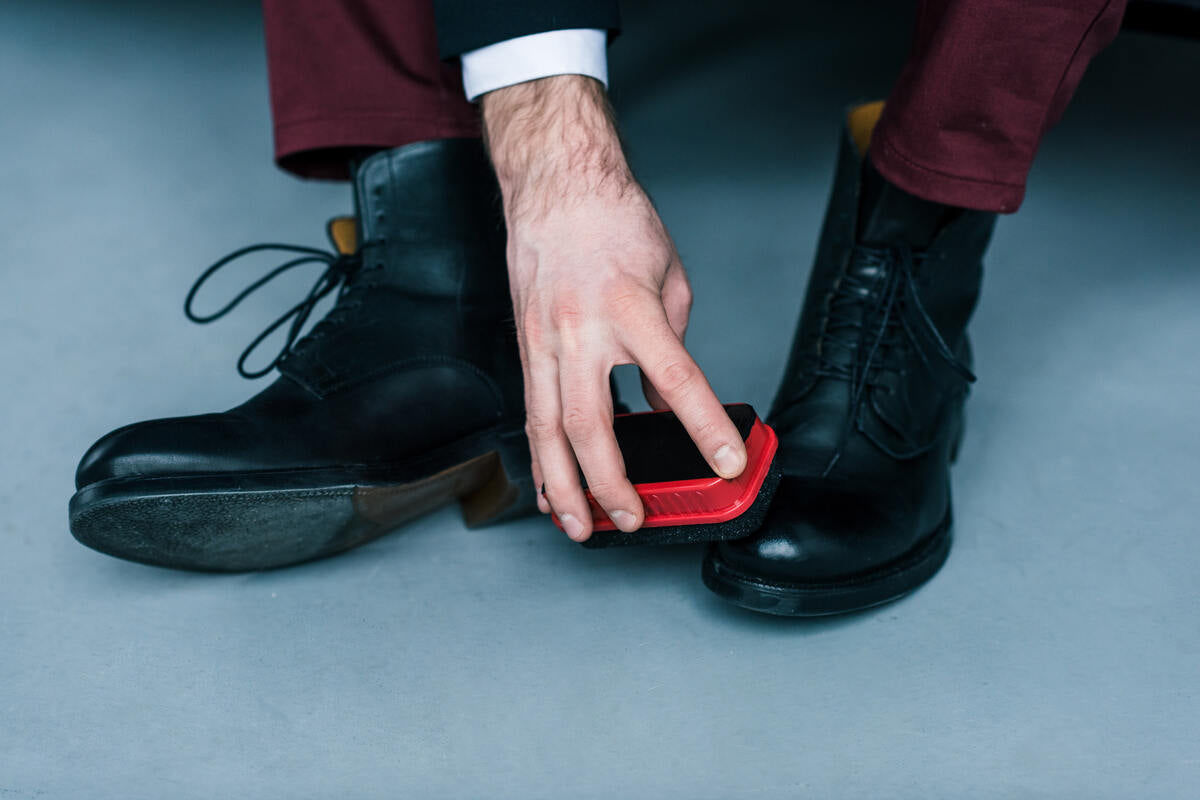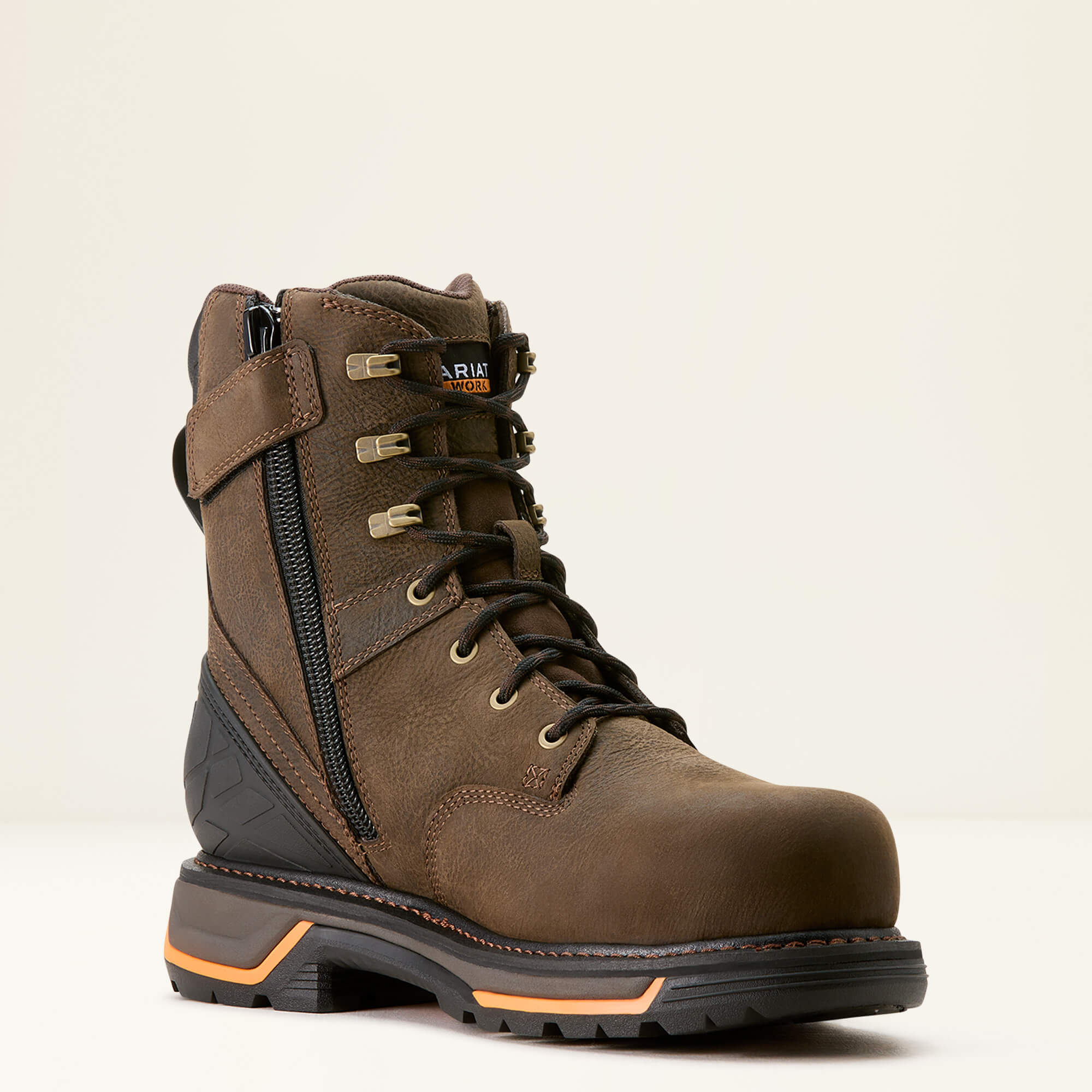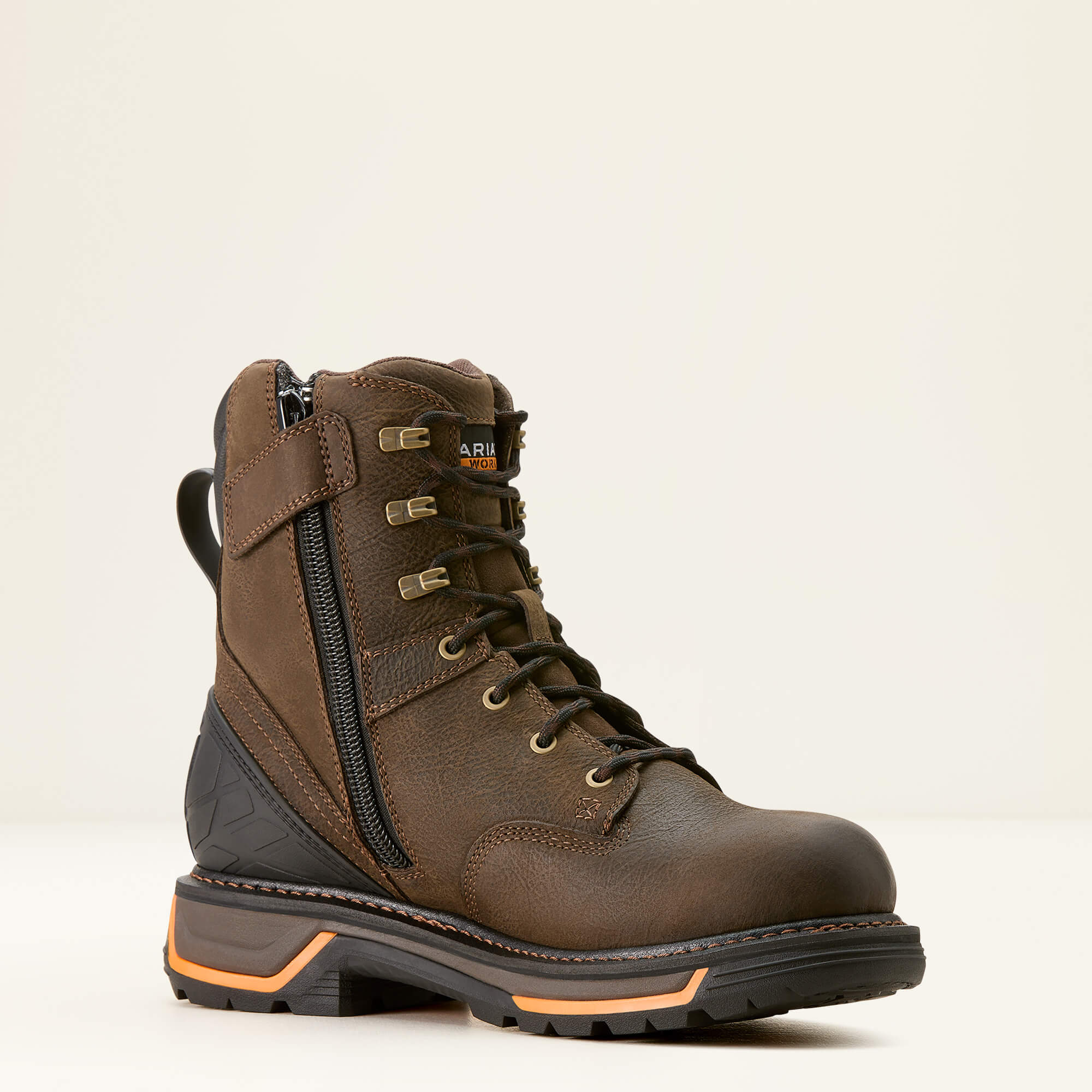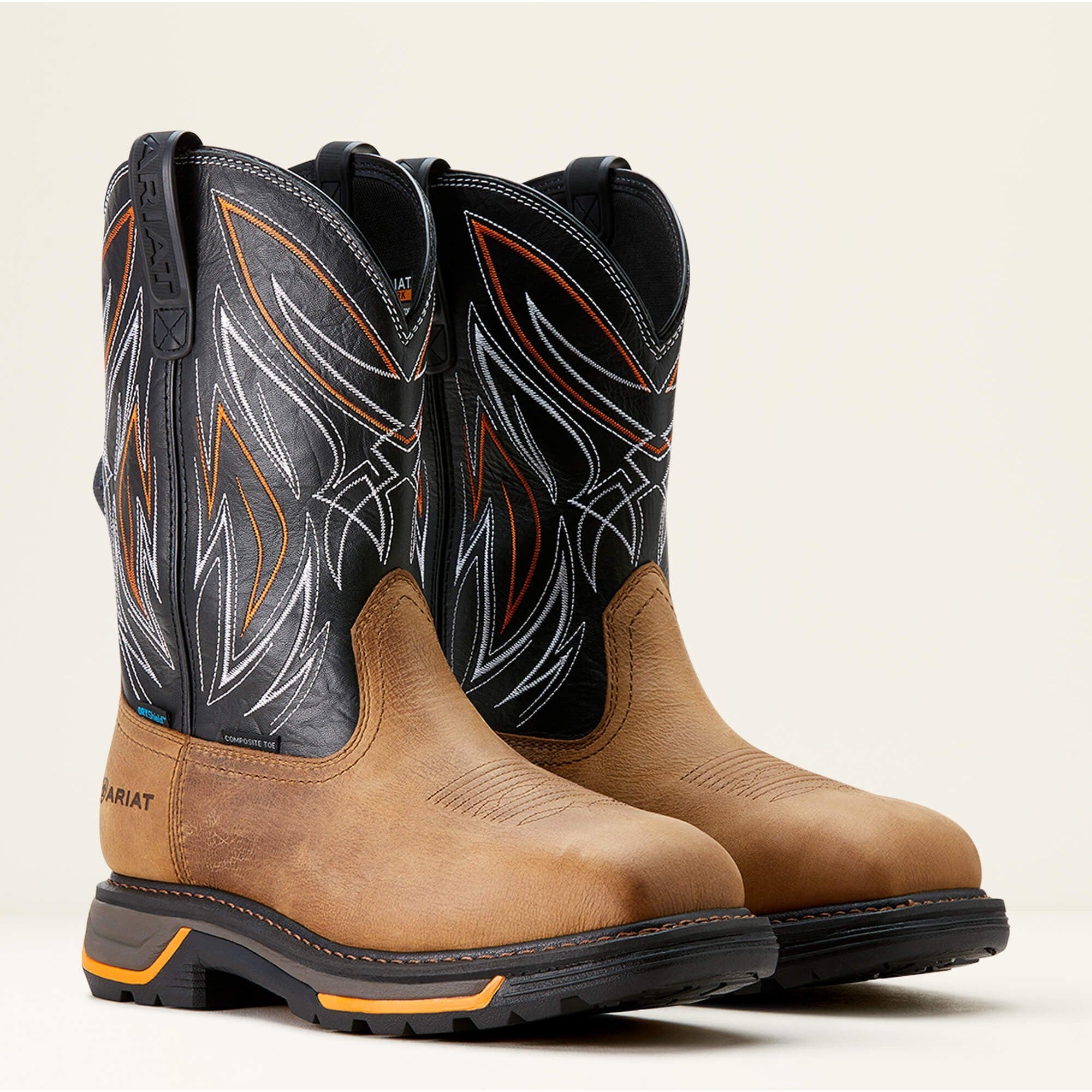Leather boots never go out of style and can last a lifetime. However, they can get dirty and smelly over time, especially if used for work. Although high-quality leather boots can get pricey, their ability to be easily restored to their original form makes the investment worth it.
A little cleaning and conditioning can go a long way – give your favorite leather boots a little TLC, and you'll extend their lifespan while keeping them close to your heart for years to come. Fortunately, it's easy to learn how to clean leather boots, and it doesn't cost a fortune.
This guide will take you through the best way to clean leather work boots step by step, along with some care and maintenance tips.
Why You Should Clean and Care for Leather Footwear
After a long day of work, there’s probably nothing but a sweet escape on your mind and forgetting about all the dirt accumulated in and on your leather work boots. However, cleaning and maintaining your leather boots is vital if you want them to serve you for years to come.
Here are several reasons why you need to protect and take proper care of your favorite pair of leather boots:
- Hygiene: Needless to say, accumulated dirt can damage boot leather over time, as well as your health. Keeping your leather boots clean will prevent such unpleasant experiences.
- Durability: There's no going back once the leather cracks open, but keeping your boots clean will prevent all the dryness and cracking caused by dirt and grime. And if you condition them once you're done with cleaning, you'll increase their lifespan even more, keeping them soft and good-looking for years to come.
- Style: Wearing well-maintained leather boots can make you look more competent, opening more doors for you regarding work. Plus, who doesn’t like to look their best?
- Color: Proper cleaning can help keep your boots looking as good as new. Some fading has to happen because of factors you can't control, such as exposure to direct sunlight. However, wiping away scuff marks, excess dirt, and grime will keep the original color of your leather boots longer.
How to Clean Leather Boots in 8 Simple Steps
The most common causes of leather damage and their fixes can be avoided altogether with proper care and maintenance. After all, prevention is the best medicine for preserving your leather goods.
Now that you know why you should clean your leather boots on a regular basis and keep them well-maintained, it's time to learn how to clean leather boots properly to keep your pair of boots looking gorgeous. After all, not all cleaning methods you come across online will do the job right.
So, what is the best way to clean leather boots? How do you clean leather boots without ruining them? Here's a step-by-step guide to a proper cleaning process:
1. Remove the Laces
Start by saying goodbye to those boot laces – give 'em a good shake to ditch all the dirt, then toss them in your laundry. And, if they're beyond saving, it's time for some fresh laces.
2. Knock Off the Dirt
Let's settle this right from the bat: Is dirt bad for leather? Absolutely! Dirt can be the silent saboteur of your leather surfaces, as it can scratch, stain, and even contribute to drying and cracking over time if not properly addressed. That's why keeping your leather boots clean and well-maintained, no matter the leather type, is essential to ensure their longevity and timeless appeal.
So, how do you clean dirt off leather boots? To shake off the visible dirt from your boots, simply knock them together a few times, then wipe off any excess debris with a dry cloth. Try to get rid of as much dirt as you can before cleaning, as wet dirt can seep into leather and dry them out. Small dirt grains can also scratch your uppers while cleaning.
3. Make Use of Saddle Soap
If you're wondering: "Can I use soap water to clean leather boots?", consider cleaning your boots with saddle soap. These specialized leather soaps incorporate gentle ingredients, conditioning, and protective components, all meticulously crafted to enhance the appearance and longevity of leather footwear, unlike other cleaning products.
Let's kick things off. First, grab a bowl of lukewarm or hot water, dampen a clean cloth, and get a small amount of saddle soap frothing with a dab of elbow grease.. Lather each boot until they are completely covered with the saddle soap solution.
4. Rinse and Dry Your Leather Boots
Is it OK to wash leather boots? Never! But is it OK to clean leather boots with water? Yes. Simply wipe off the saddle soap solution with a clean, wet cloth. If you can still see the grime on your leather boots, repeat the entire process to get the excess product until they are clean.
Forget about cheap plastic scrub brushes, as they can scratch and do irreversible damage to your beloved leather boots, especially faux leather. It's best to stick to a gentle cloth or towel. You can use a cleaning brush to get the caked-on dirt between grooves and out of the soles.
Once done with rinsing, let your boots air dry naturally, or use a boot dryer if you want to speed up the drying process.
5. Prepare Your Boots for Conditioning
Warm your boots slightly to prepare them for conditioning. You can do this by leaving them in indirect sunlight or with a blow dryer. Just make sure not to overdo it and cause damage - boots should be comfortable to touch, not hot.
6. Condition Your Leather Boots
When new, leather boots are so supple and beautiful thanks to the leather's natural oils. However, much of it is lost after several months of wear. You can restore these boot oils by conditioning leather boots with a high-quality conditioner (avoid inexpensive leather conditioners, as they might damage leather due to harsh chemicals).
Do this by applying your leather conditioner with a clean cloth using small circular motions. Ensure the entire surface of the boot is covered. Then, use a buffing brush or a clean horsehair brush if you have one to buff the boots, break any excess conditioner, and evenly condition the entire boot.
Is coconut oil good on leather? Coconut oil can help maintain leather's softness and flexibility, although it falls short when it comes to being waterproof. On that note...
7. Don't Skip Waterproofing
While some commercial leather conditioners boost the leather's natural waterproofing, it's still recommended to add a layer of a waterproofing agent to ensure water doesn't get the best of your boots. That's especially true if you work in wet conditions, hike on muddy trails, or live in a humid environment. There are three options you can use to waterproof your leather boots: beeswax, liquid-based wax, and silicone spray.
Silicone sprays are a breeze to put on, but they won't stick around as long as the other two alternatives. Beeswax waterproofs and conditions the leather in one fell swoop, making it a popular choice. If you have full-grain leather boots, beeswax treatment is an ideal option. However, you should avoid it if your boots feature Gore-Tex liners, as it can damage the material's breathability. In this case, liquid-based wax does wonders. While it isn't as durable as its bee counterpart, it's easier to apply and absorbs much faster.
To apply beeswax, put a small amount on a clean cloth, work it into the leather in small circular motions, and let it absorb. Repeat the process a few more times. Once you notice the leather doesn't absorb wax anymore, remove any excess with a clean rag. To waterproof boots with a water-based wax, apply it to the leather with the built-in sponge – the leather will absorb it in a matter of minutes. If there's any remaining residue, wipe it away with a clean cloth.
8. Make Your Leather Boots Shine
How do you make leather boots look new? Polishing! A good polish can work wonders, making your leather boots look as sharp as the day you first laid eyes on them. Once you're done with cleaning, it's time to polish your leather boots to make them shine. Polishing will also help remove scuff marks and scratches.
To polish your boots, wrap a clean cloth around your finger. Then, apply a small amount of boot polish to it and gently dab the polish around the boot. Rub it in with the rag, distributing it evenly on the entire boot. All that's left to do is to thoroughly buff the boot's surface using a soft brush or another rag. Once dry, your boots will shine as if you just bought them.
How to Clean Leather Boots from the Inside
The boot's insides can get smelly. If that's the case with your leather boots and their insides are also made of leather, you can follow the instructions described above. However, if the lining is made of some other material, you can use a damp cloth or a damp sponge, put a few drops of saddle soap on it, and rub it around the boot's inside until foamy. Then, use another wet cloth or clean sponge to wipe all the foam down. Once clean, let them dry naturally, or use a boot dryer.
What household items can you use to clean the inside of your leather boots? You can also make a water and white vinegar solution and wipe down the boots inside with the mixture. Alternatively, you can place a knotted sock with baking soda in the boot overnight and let it absorb any unpleasant odors or extra moisture. Baking soda - sodium bicarbonate also acts as an antibacterial boot powder for extra hygiene.
If the insides of your boots are too smelly or beyond cleaning, swapping them out with a new pair of insoles can make a world of difference.
Removing Different Stains from Leather Shoes and Boots
Some stains are more stubborn than others, especially when it comes to leather boots. Here's how to clean leather boots from different tough stains:
Water Stains
To remove water stains, blot them with a cloth until dry. If they're playing hard to get, take a damp cloth and gently wipe from the center outwards.
Grease or Oil Stains
Using a dry towel or cloth, blot the oil or grease stains, lifting as much of the excess as possible. Then, dust the stain with cornstarch or talcum powder and let it sit for around 20 minutes to absorb the oil or grease.
After that, remove the cornstarch or powder using a soft-bristled brush. Keep at it until that stain finally throws in the towel – just repeat the process as many times as it takes!
Ink Stains
How do you remove permanent stains from leather? Ink stains are some of the toughest stains to get rid of, and if it's really bad, you'll probably have to visit a professional. However, if the stain is still fresh, you may be able to remove it yourself. You can do this by blotting the stain with a soft, dry cloth, but don't rub it or scrub it as, this way, the damage will spread. If the ink transfers to the cloth, the process is working.
Once the cloth stops soaking up the ink, rub the remaining stain with a dab of soap and a dry cloth using small circular movements to prevent spreading the ink further. If you get most of the stain off your boots, the rest will fade over time.
Scuff Marks
To remove scuff marks, combine two tbsp of baking soda with just enough lukewarm water to make a paste and apply it to the scuff marks. Then, rub the area with a soft cloth. Clean the paste using another damp cloth.
Ensure you don't rub too hard or use too much baking soda, as it can damage leather. Another way to remove scuff marks is by using non-gel toothpaste, repeating the same process.
Salt Stains
Sidewalk salt stains can really ruin the appearance of your leather work boots. To remove salt stains, use a solution made of one part white vinegar and water for light-colored leather or mix one part vinegar with two or more parts water for more delicate leather. First, gently rub the solution onto the salt stain. Then, use a new, clean, damp cloth to wipe it away. You may need to repeat this process a few times.
Does vinegar ruin leather? Vinegar can be harmful to leather if used inappropriately or in excessive amounts, so it's essential to exercise caution because it is acidic. If you decide to use vinegar to clean leather, it should be heavily diluted with water – using undiluted vinegar can be too harsh and potentially damage the leather.
How to Clean Your Suede Boots
Suede is an animal product - a type of leather made from the underside of the animal's skin, giving it a smooth feel. However, cleaning suede can get tricky because water can damage this delicate type of leather. A few drops of water won't do much harm, but you should still be careful.
To clean your suede boots, you need to get a special brush specifically designed for cleaning suede (as a stiff brush can easily damage this leather type) and use it to remove grime and dirt gently. Then, go over a boot with a soft, clean towel, gently scrubbing the lingering dirt.
If you have stubborn stains on your suede boots, use a suede eraser to remove them. If the stains still won't come out, take extra steps, such as using a bit of white vinegar and water solution, applying it onto a clean cloth, and gently rubbing it into the mark.
Find Your Pair of Leather Boots
Congratulations, now you know how to clean leather boots – the right way! Leather boots are reliable, never go out of fashion, and when well-maintained, they can last a lifetime. Just follow our tips, and you’ll be good to go, having peace of mind knowing you’re taking proper care of your trusty companions.
And if you're ever in the market for a fresh pair, dive into our diverse selection and check out our collection of premium leather boots. We've got styles and designs to match anyone's needs and preferences, all from the leading brands.
Your perfect leather boot awaits!
FAQ
Can You Wash 100% Leather?
Yes, you can clean 100% leather, but it's essential to use gentle methods like damp cloth wiping or a leather-specific cleaner. Avoid immersing and soaking leather boots in water or using harsh chemicals.
Is Vaseline Good for Leather Boots?
Vaseline can be used sparingly to moisturize and shine leather temporarily. However, it's not an ideal long-term solution as it may attract dust and dirt, potentially harming the leather over time.
Does Baking Soda Clean Leather?
Baking soda can be effective for removing odors from the inside of leather footwear, but it's not typically used for cleaning dirt or stains, as it can potentially damage or whiten the leather.
What Is the Best Homemade Leather Cleaner?
A popular homemade leather cleaner can be made from simple household products - one part white vinegar and two parts water mixed together in a spray bottle. This vinegar/water solution is effective for cleaning leather boots and should be followed by leather conditioning to keep the leather soft and supple.






